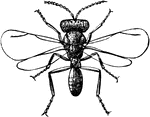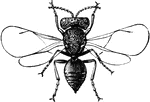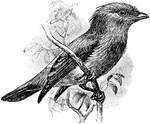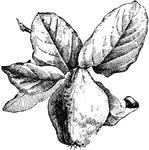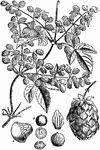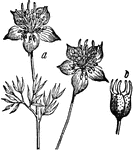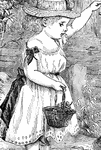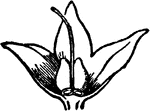
Black Scale
A drawing of the newly hatched larva, viewed from beneath, with enlargements of anal extremity viewed…
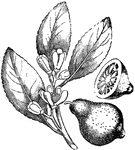
Lemon
The fruit of a small tree belonging to the same natural order as the orange. There are numerous varieties…
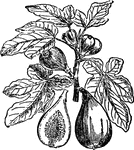
Fig Plant
The fruit of Ficus carica, which is native to Asia. The genus is an enormous one in the tropics. There…
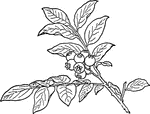
Huckleberry
"The fruit of various species of Vaccinium and Gaylussacia, genera which belong to the heath family…

Melons
"A plant of the same genus with the Cucumber, much cultivated for its fruit, which is sweet, with a…
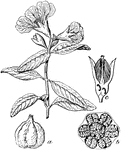
Pomegranate
It is of the size of an orange, has six rounded anles, and bears at the summit the remains of the calyx…

Tortricina
"The Tortricina include a great number of small moths exceedingly injurious to orchard and other trees.…
Pruning
"The nature of the cut itself in pruning is of more consequence, especially in the case of fruit trees,…

Pruning
"The nature of the cut itself in pruning is of more consequence, especially in the case of fruit trees,…
Pruning
"The nature of the cut itself in pruning is of more consequence, especially in the case of fruit trees,…
Pruning
"The nature of the cut itself in pruning is of more consequence, especially in the case of fruit trees,…
Pruning
"The nature of the cut itself in pruning is of more consequence, especially in the case of fruit trees,…
Pruning
"The nature of the cut itself in pruning is of more consequence, especially in the case of fruit trees,…

Dumontier's Fan
"The form of Dumoutier is merely a refinement on the Montreuil method. The formation of the tree commences…

Allaria Officinalis
"Allaria officinalis. a, upper part of stem, with leaves and flowers; b, extremity of a branch, in fruit."…

Bread-fruit
"Artocarpaceae, a natural order of Dicotyledonous plants, of which the Bread-fruit is the type; very…

Arum Maculatum
"Arum maculatum. a, leaves and root; b, spathe, with base of spadix exposed; c, fruit." — Chambers'…

Vincetoxicum
"Vincetoxicum officinale. a, root; b, fruit; c, a single seed." — Chambers' Encyclopedia, 1875

Common Ash
"A genus of trees belonging to the natural order Oleaceae, and distinguished by very imperfect flowers,…

Common Ash
"Common Ash. a, a branch with leaves; b, flowers; c, fruit (on a considerably larger scale than the…
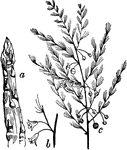
Asparagus
"Asparagus. a, a young shoot; b, flowers; c, the upper end of a stem, showing branches, leaves, and…

Astrocaryum
"A genus of Palms, of which about sixeen species are known, natives of tropical America, remarkable…
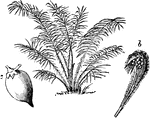
Stemless Palm
"Stemless Palm. b, spadix, with spathe forming a hood over fruit; c, fruit, about one-fifth natural…

Balsam
"Balsam (Impatiens Noli-me-tangere). a, top of stem with leaves and flowers; b, ripe fruit unopened;…
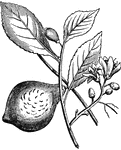
Citron
"A tree cultivated in the south of Europe, and other warm, temperate, or sub-tropical countries for…

Clematis
"A genus of plants of the natural order ranuculaceae having four colored sepals, no corolla, and fruit…
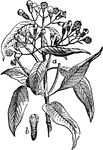
Cloves
"Cloves are the flower-buds of the Clove-tree. The genus to which this tree belongs is of the natural…

Clusia Rosea
"1, full expanded flower; 2, a calyx seen from below; 3, the ovary, with a part of the calyx cut away;…
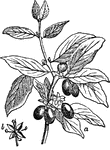
Cornel
"Cornel: a, a branch with leaves and fruit; b, a single flower." — Chambers' Encyclopedia, 1875
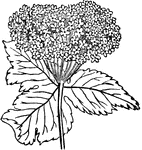
Cow Parsnip
"A genus of plants of the natural order Umbelliferae, having petals bent in at the middle, and flat…

Crowberry
"A small procumbent shrub, of the natural order Empetraceae, a native of the northern parts of the world,…

Daphne Mezereon
"A genus of plants of the natural order Thymeleaceae, having a 4-cleft, funnel-shaped perianth, the…

Dewberry
"A plant of the same genus with the Bramble, and very nearly allied to it, but having weaker and more…

Dogbane
"Dogbane. a, end of branch, with leaves and flowers; b, a flower cut open; c, fruit." — Chambers'…

Capsicum
"A genus of annual, subshrubby plants, order Solanaceae, with a wheel-shaped corolla, projecting and…

Cellar
Learn-to fruit cellar, covered with earth. It should be built of mason work, with a roof of stone slabs,…
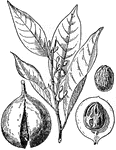
Myristica Fragrans
1, twig with male flowers; 2, ripe pendulous fruit opening; 3, fruit after removal of one-half of the…




